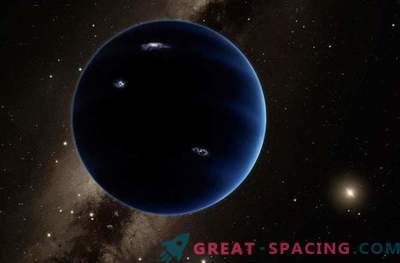
Planetary systems created in dense and massive regions of the birth of stars receive large volumes of Aluminum-26, which dries building blocks prior to accretion (left). Created in areas of star formation with a small mass of the planet accrete water-rich bodies and become oceanic worlds (right)
The solid surface layer of the Earth and the temperate climate may depend in part on the massiveness of the neighboring star. If it were not for the radioactive star elements trapped in the early solar system, the Earth could have become a hostile ocean world covered with large-scale ice sheets.
Computer models demonstrate the existence of two different planetary systems. There are those that resemble the sun, where there is little water on the planets. But there are systems with oceanic worlds, since there was no massive star around the main system. These are important findings reflecting the role of an alien star in the formation of the planet.
Earth, in fact, is incredibly dry compared to planets formed in various models. Water covers more than 2/3 of the earth’s surface, but other inner planets of the earth’s type are dry. But here the lack of better abundance. All planets have a core, a mantle (inner layer) and a crust. If the amount of water in the rocky planet is much higher than the earthly indicator, the mantle is covered by the global ocean and an impenetrable layer of ice. Because of this, geochemical processes become impossible, such as the carbon cycle (as on Earth), stabilizing the climate and creating surface conditions for the formation of life.
Scientists have created computer models to display the formation of planets from building blocks, namely planetesimals - rocky bodies with a size of tens of kilometers. During the formation of the planetary system, the planetesimals appear in the form of a dust and gas disc around the young star and become planetary embryos.
Radioactive heat engine
As the planetesimals heat up from the inside, a part of the original volume of water ice evaporates and goes into space before it is delivered to the planet. Internal heating may have occurred soon after the birth of the solar system 4.6 billion years ago and can still continue in many places. The analysis shows that at the time of the formation of the proto-Sun a supernova exploded nearby. Radioactive elements, including aluminum-26, were merged in a dying star and ended up in our young solar system. Scientists believe that the quantitative predictions from this study will help future telescopes that hunt exoplanets, track potential traces and differences in the composition of the planets, and also clarify the effects of the aluminum-26 degradation mechanism.
In future missions, plan to explore earth-sized exoplanets. This will help to understand whether our planet is one of a kind or whether there are a great many such planets. Also get a better understanding of the role of the effect of a supernova explosion.











































